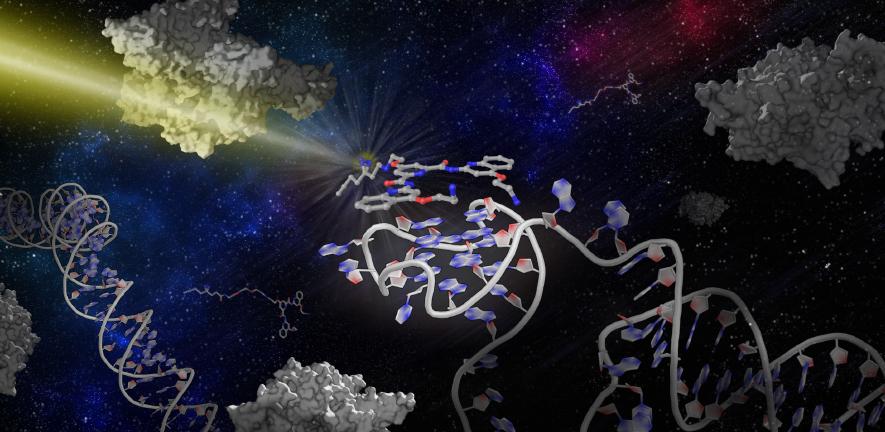
DNA usually forms the classic ‘double helix’ structure of two intertwined strands. A decade ago, researchers in Sir Shankar Balasubramanian’s group found that four-stranded DNA structures, called G-quadruplexes, occur naturally across the human genome. G-quadruplexes are found at higher concentration in human cancer cells and may play an important role in disease development.
Previously researchers from the group have shown that these G-quadruplex structures influence how cells read genomic information. However, it remains a major question how exactly they form and influence cellular processes, and it has been extremely challenging to study these interactions directly in a cellular environment.
Now they have solved this problem by developing a new approach which allows the systematic identification of hundreds of G-quadruplex-interacting proteins in living cells. The new strategy provides an unbiased method for the global mapping of G-quadruplex-interacting proteins in live cells, and could open up new avenues for the future of cancer diagnosis and therapy. Details of the study are published today in the journal Nature Chemistry.
“There has been an unmet need for a systematic approach to explore the G-quadruplex interactome within the native chromatin context. This is crucial as local chromatin states seem to significantly contribute to the accessibility of G-quadruplex structures,” explained Professor Balasubramanian. "This research gives us that approach."
Earlier research had enabled researchers to map the genomic location of DNA G-quadruplexes in cellular chromatin, which is made up of DNA and proteins. The new strategy, called co-binding-mediated protein profiling (CMPP), uses specialised chemical probes that permeate into the nuclei of living cells and dock onto G-quadruplexes, allowing the identification of interacting proteins.
Using this approach, the team identified proteins from diverse functional classes, including so-called chromatin remodellers, which shape the structure of chromatin, and may explain how G-quadruplexes influence gene expression.
Dr Xiaoyun Zhang, one of the lead authors of the study, said: “Through this new approach we have been able to identify a long list of interesting candidate proteins to investigate, which will will help us better understand how G-quadruplexes are involved in different genomic processes.”
Dr Jochen Spiegel, another lead author, added “G-quadruplexes are more abundant in certain cancer cells and our new tools will help to identify what proteins regulate quadruplex function and may represent interesting drug targets.”
The researchers point out that a similar approach could also be used to explore other DNA- and RNA-associated structural features in the future.
The research was funded by Cancer Research UK.
Research
X. Zhang, J. Spiegel, S. Martinez Cuesta, S. Adhikari, and S. Balasubramanian, Chemical profiling of DNA G-quadruplex-interacting proteins in live cells.

